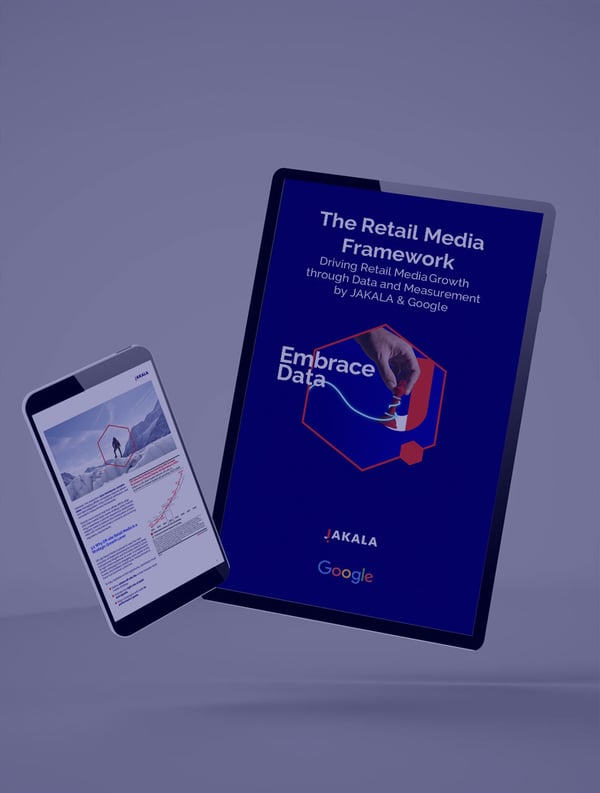You've surely asked yourself at least once: "Is my site Google-friendly?". In other words, are you doing everything possible to ensure that Google recognises it as useful, authoritative and well-structured?
In this article you'll understand if your site responds to the needs of the search engine that is (still but for now) the market leader, with practical advice, useful tools and some information about new AI technologies that can help you in the process.
Why we still talk about Google as the main search engine
Despite the advancement of artificial intelligence and growing attention towards chatbots like ChatGPT and voice assistants, searching on Google remains one of the most frequent digital activities for users. Data confirms¹ that Google not only maintains primacy in the number of searches, but continues to grow in volume also and precisely thanks to the integration of AI-related features, such as AI Overview officially launched in Europe in March 2025.
.png?width=1280&height=720&name=immagine%20(2).png)
(Only) Three aspects to consider
When talking about SEO optimisation, it's easy to get lost in hundreds of technicalities. However, to understand if your site is truly Google-friendly, just three key elements are enough: technical health, content quality and authority built through links. Focusing on these aspects helps you cover the basics and improve positioning without overcomplicating your life.
Technical site health is the foundation of everything
Here's what you need to check:
- Loading speed: a slow site frustrates users and increases abandonment rate. Google considers speed a ranking factor, therefore it's essential to optimise images, reduce unnecessary scripts and exploit browser cache.
- Mobile-friendly: today more than 60% of web traffic comes from mobile devices². Google uses "mobile-first" indexing, i.e. it evaluates the mobile version of the site first. Ensure your site adapts perfectly to screens of various sizes.
- Simple and structured URLs: Clear, short and descriptive URLs help both Google and users understand page content. Avoid long URLs with unnecessary parameters.
- XML sitemap and robots.txt file: the sitemap helps Google discover and index all pages, whilst the robots.txt file manages which parts of the site should be crawled or excluded.
- Crawling errors: pages with 404 errors or broken links damage SEO and user experience. Using tools like Screaming Frog SEO Spider allows you to identify and correct these problems systematically.
- Internationalisation: the presence of specific implementations, such as the <hreflang> tag, for multi-language sites is the key to a coherent presence of the correct site version for the target audience.
Why is it important?
Quality content and why it's always valid to affirm that "Content is King"
What does it concretely mean to offer quality content?
- Originality: avoid copied or duplicate content. Google penalises sites that don't add unique value.
- Depth: try to address topics comprehensively, anticipating questions that users might have.
- Clarity: use simple and direct language, dividing text into short and readable paragraphs.
- Organisation: headings (H1, H2, H3), bold text and bullet points help highlight key points and improve scannability.
- Regular updates: fresh content is preferred by Google and shows that the site is active and curated. But remember, it depends on the nature of the business and the type of topic!
- Greater time spent on site by users.
- More shares and natural backlinks.
- Reduced bounce rate.
- Better positioning in search results.
Creating effective content doesn't just mean inserting keywords, but offering useful information that satisfies search intent, especially in this period of change oriented towards/by LLM models and conversational searches.
Enhancing the digital network with links
Why are links so important?
- Backlinks (external links): Google interprets them as votes of confidence. A site that receives links from authoritative sources acquires greater credibility and authority in the eyes of search engines.
- Quality vs quantity: not all links are equal. Better few links from relevant and reliable sites than many links from spam or low-quality sites, which can cause penalties.
- Internal links: connecting site pages to each other helps Google discover all content and understand which are most important. It also improves user navigation, guiding them along a coherent path.
The Toolkit for every good SEO: indispensable tools
To do SEO (well) today it's necessary to know how to read the signals that Google interprets, as well as stay updated on ecosystem news within which it moves and tools that can be exploited: it's a subject in continuous transformation.
Here are some of the fundamental tools to have in your toolkit:
- Google Search Console: indispensable for monitoring coverage, indexing, mobile performance and presence in results.
- Screaming Frog SEO Spider: the best ally for conducting large-scale technical audits: finds crawling errors, redirects, duplications, missing tags and verifies site behaviour from an SEO perspective.
- PageSpeed Insights & Lighthouse offer detailed analysis on Core Web Vitals and any loading problems related to frontend.
- GTmetrix: useful for supporting Google tools, with practical data on response times, server requests and impact of page elements.
- Google Trends: perfect for analysing search seasonality and comparing volumes on themes and keywords.
- Semrush: complete suite for keyword research, audits, SERP tracking, competitive analysis and much more.
- Ahrefs: excellent for backlink profile monitoring, high-performance content research and competitor site exploration.
How AI is modifying optimisation and monitoring methods
We've said it, we're living it: AI is changing the way we search but not only, search engines are adopting it to create increasingly sophisticated evaluation methods going well beyond the traditional concept of "keyword".
But what has changed in the approach to the subject and how much of the must-haves of this article could change over time? As every good SEO would say, "it depends".
What is certain is that optimisation today can no longer limit itself to responding to search intent expressed literally. AI, integrated into search engines and SEO tools, shifts focus towards entities, semantic relationships and behavioural signals. Understanding context, relevance and credibility becomes central, as does the ability to adapt to a continuously evolving ecosystem, where positioning is no longer static but fluid — and here we increasingly talk about fluctuating SERPs.
Simultaneously, also data reading methods are changing: we're moving from metrics based on clicks and rankings to more nuanced indicators, which will require new KPIs to evaluate visibility and impact. For example, the distinction between mentions and citations — historically relevant in link building — could acquire new forms of value: a mention in an authoritative context, even without direct link, can contribute to reputation building and visibility in AI-generated results.
This implies a revision of some classic SEO techniques, which however shouldn't be abandoned, but reinterpreted in light of new paradigms. Accumulated experience remains fundamental: it's needed to understand where algorithms are going and how to align content and off-site signals to the expectations of a search engine that increasingly reasons "like a person". And in this scenario, those who manage to combine method, creativity and evolutionary data reading ability will be one step ahead.





